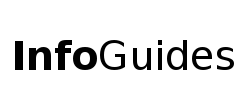
 | University Libraries
| University Libraries
A citation manager can make your life a lot easier. It helps you organize your references and notes. It can help you format your paper. Zotero is my favorite, but please choose the one that best suits your needs and workflow.
Provides an overview of the Writing Center's services and a brief introduction to making an appointment. from YouTube
Welcome to the george Mason university writing center. We're located here in the lab for writing and communication in Johnson Center Room 227e. Here you can work with our well-trained consultants on any project in any discipline and at any point in your career at Mason. Our resources are free and available to all writers in the Mason community including students, staff, faculty, and alumni.
Our consultations are 45 minutes long and during that time, we can work with you on all types of writing at any stage in the writing process. Just getting started? We can walk through your assignment prompts, so that you can create a plan for your writing. Have a rough draft or a polished draft? We can work on strategies for revising your writing. If you're just stuck, we can work on getting you unstuck. We have strategies and resources for brainstorming, outlining, drafting, revising, proofreading and editing your paper. At the end of a consultation, you can expect to walk away with three things: some good feedback, some concrete techniques to use for future drafts, and a plan to develop and revise your paper.
For your convenience, we offer both in-person and online appointments. In an in-person appointment, you'll meet your consultant face-to-face right here in the lab for writing and communication, but what if you can't make it to campus for your appointment? No problem. You can choose from one of our two online appointment formats. We offer Zoom sessions, where you'll meet with your consultant via video chat or if you can't meet with your consultant in real time, we offer written feedback sessions, where you'll upload a draft and receive written comments from your consultant.
The writing center also has programs designed to support specific writer's needs. If English is not your first or home language, we hope that you enroll in the ESOL opt-in program. If you are registered with the disability services office, you can enroll in our DS opt-in program. Both programs offer regular weekly appointments with the same consultant for the duration of the semester. If you're working on a thesis, dissertation proposal, article for publication, or any paper longer than 15 pages, you can make a specialized appointment with a thesis, dissertation consultant. In this kind of appointment, you'll upload your draft by 9 a.m on the day of your session to allow your consultant time to read your work before you meet.
For more information and to make an appointment, visit our website writingcenter.gmu.edu. There you'll find more details about our services, as well as a video with instructions on how to register for an account with our online scheduler and book your appointment. Of course if you have any questions, you can stop by the lab in Johnson Center room 227e, email us or call us at 703-993-1200. It's so rewarding to get meaningful feedback on your writing. Come see us soon. We're looking forward to working with you.
Note: Select 720p from settings button if possible.
Is the video not visible? Check your browser compatibility. opens new window
If your browser is compatible, try try Writing Center Video Roadshow - 2022 (video, 3:00).
Ask a Librarian | Hours & Directions | Mason Libraries Home
Copyright © George Mason University